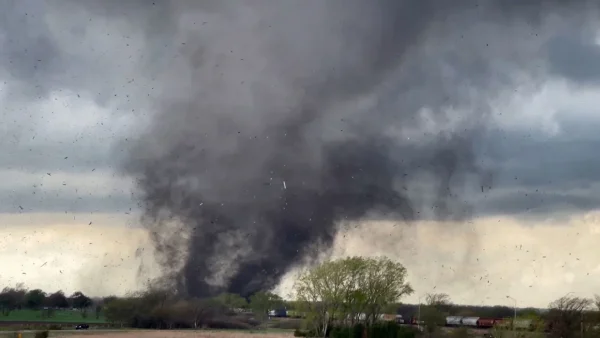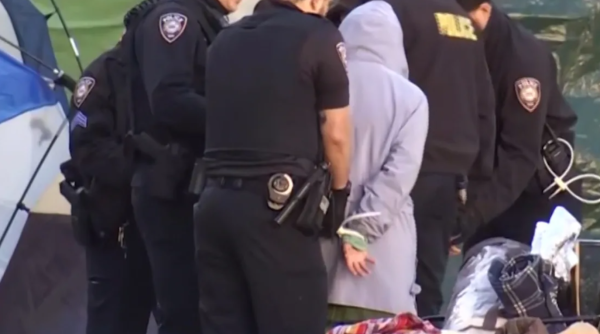The banking meltdown may have done the Fed’s work for it
March 22, 2023
CNN– Federal Reserve officials have a difficult path ahead of them. They still have work to do to bring inflation down, but their efforts have been complicated by the events of the past few weeks.
The failures of Silicon Valley Bank and Signature Bank and the ongoing stress in the regional banking sector (there may be nearly 190 lenders at risk of failure, according to a new study) have put the Federal Reserve in a strange situation. Policymakers don’t want to raise interest rates and risk further damage to the system, but Fed officials also remain worried about persistent inflation.
Two weeks ago, officials had likely planned to hike rates by at least half a percentage point. Now, the banking meltdown has complicated that strategy. Wall Street is betting on a quarter-point hike, while some prominent economists are calling for a temporary pause.
But in a strange twist, it’s possible that the banking meltdown actually did some work for the Fed in bringing down prices without raising interest rates.
What’s happening: Fears of a bank run cause lenders to take fewer risks with their capital reserves to ensure they have enough cash to cover any potential withdrawal requests, said analysts at Pantheon Macroeconomics. That makes them “disinflationary events,” they wrote in a note on Tuesday.
Economic growth could be reduced by as much as half a percentage point in 2023 if small and midsize banks tighten their lending standards. That could have the equivalent effect of the Fed hiking rates by half a point, said Goldman Sachs economists on Tuesday.
That’s because banks with less than $250 billion in assets account for about 50% of US commercial and industrial lending, 60% of residential real estate lending, 80% of commercial real estate lending and 45% of consumer lending, according to Goldman analysts led by chief economist Jan Hatzius.
Torsten Slok, chief economist at Apollo Global Management, estimated in a note that the banking meltdown could have an even larger effect on the economy, equivalent to a percent-and-a-half rate hike by the Fed.
“In other words, over the past week, monetary conditions have tightened to a degree where the risks of a sharper slowdown in the economy have increased,” he wrote in a note over the weekend.
The other side: Still, some economists don’t think the Fed is off the hook. Mohamed El-Erian, chief economic adviser at Allianz, wrote in The Financial Times this week that if the Fed doesn’t increase interest rates, it would “set up more policy flip-flops that fail to deliver a soft landing while amplifying unsettling financial volatility.”
In an interview with Bloomberg this week, former US Treasury Secretary Larry Summers said the Fed should be wary of falling prey to financial dominance — when the Fed doesn’t tighten monetary policy because of potential risks to the stability of the financial system.
“It would be very unfortunate if, out of solicitude for the banking system, the Fed were to slow down its rate of interest-rate increase beyond what was appropriate given the credit contraction,” he said.
Bank stocks rebound as Janet Yellen, Jamie Dimon work to restore confidence
The collapse of Silicon Valley Bank and Signature Bank rippled through markets last week. Small and mid-sized banks across the United States saw their stocks plummet to new lows as fear of contagion set in and the stability of the financial system was challenged.
On Tuesday, an unlikely superduo — US Treasury Secretary Janet Yellen and JPMorgan Chase CEO Jamie Dimon — formed to bolster investor confidence and propel regional bank stocks.
Yellen, speaking at the American Bankers Association on Tuesday, delivered a very clear message to markets: The US is prepared to protect smaller banks and their deposits if necessary, she said.
The Treasury secretary reiterated that the federal government would be willing to rescue uninsured depositors at small banks if lenders suffer bank runs, raising the specter of contagion.
“We are ready and prepared to take the steps that are necessary to ensure depositors that the banking system and their deposits are safe,” Yellen said.
Jamie Dimon, meanwhile, led talks to create a rescue plan for First Republic and forge a path forward for the beleaguered bank, according to a Wall Street Journal report.
Yellen and Dimon’s efforts appeared to do the trick. Shares of First Republic soared nearly 30% in trading on Tuesday, after dropping by 47% to new lows in the previous session. The SPDR Regional Banking Equity Traded Fund, which tracks a number of small and mid-sized bank stocks, gained 5.8% for the day.
What comes next for the banking industry is largely dependent on the Federal Reserve’s policy decision and whether banks remain above water for the time being. But for now, it appears that Wall Street is happy.
















